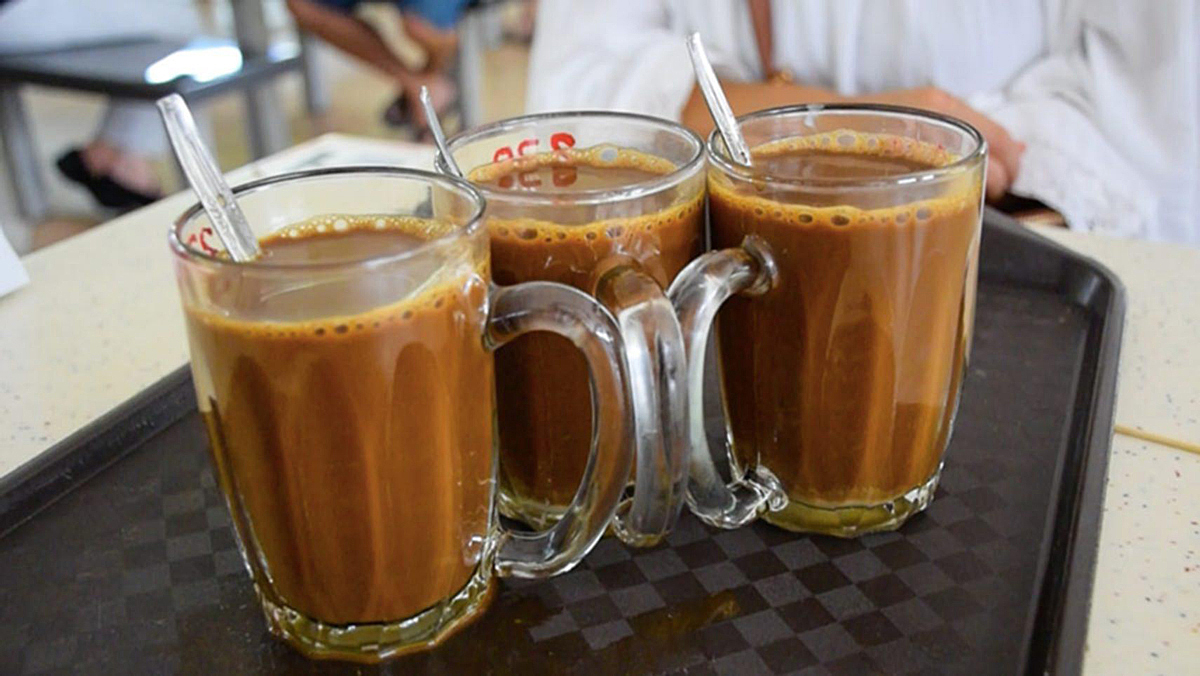indonesia
-
Posted: September 23, 2020Categories: Coffee 101
-
Posted: October 09, 2019Categories: The BeanRead more »
It’s common knowledge that most of the coffee beans produced commercially come from two varieties: Arabica and Robusta. But did you know that there are actually other lesser-known varieties of coffee bean? One of them is Liberica, which accounts for less than 2% of commercially-produced coffee worldwide. In this article, we’ll tell you all you need to know about the world’s rarest type of coffee.
What’s so special about Liberica?
[caption id="attachment_7483" align="alignnone" width="1200"] A Liberica coffee bean (middle) flanked by Arabica beans. Liberica beans are larger and irregular in shape compared to Arabica beans. Photo from Fernando Medrano[/caption] Originating from Liberia in West Africa, the Liberica coffee plant produces larger, irregular-shaped cherries compared to Arabica plants. It’s said to have a floral and fruity aroma, but when made into coffee, has a full-bodied, woody taste. Those who have been lucky enough to try Liberica coffee say it tastes unlike any coffee they’ve had before. Thanks to its complex flavour profile, Liberica beans are often added to coffee blends to give it more dimension. [caption id="attachment_7486" align="alignn
A Liberica coffee bean (middle) flanked by Arabica beans. Liberica beans are larger and irregular in shape compared to Arabica beans. Photo from Fernando Medrano[/caption] Originating from Liberia in West Africa, the Liberica coffee plant produces larger, irregular-shaped cherries compared to Arabica plants. It’s said to have a floral and fruity aroma, but when made into coffee, has a full-bodied, woody taste. Those who have been lucky enough to try Liberica coffee say it tastes unlike any coffee they’ve had before. Thanks to its complex flavour profile, Liberica beans are often added to coffee blends to give it more dimension. [caption id="attachment_7486" align="alignn
-
Posted: September 25, 2019Categories: Coffee 101
-
Posted: October 31, 2018Categories: The BeanRead more »
Think of Indonesian coffee and chances are the first thing that comes to mind is kopi luwak, aka civet coffee made from beans plucked from the faeces of Asian palm civets. Find out why kopi luwak is said to be the coffee bean for crazy rich Asians. But there are bigger, more popular varieties that originate from Indonesia, particularly from a region named Kintamani in everyone’s favourite island getaway: Bali.
Kintamani Coffee: Origins
Kintamani Coffee comes from an area that's located in the northern highlands of Bali. This is a place that has all the factors needed for that perfect coffee production process, including a highly favourable climate and rich volcanic soil. The lands between two main volcanoes, Batukaru and Agung, is where most of the Kintamani coffee cultivation is carried out. The Balinese brew is a 100% Arabica, single-origin specialty coffee with an incredibly smooth body. Its signature taste really shines thanks to the handful of family farmers in Kintamani who take the time to pick the coffee cherries one by one from their coffee trees, many of which are decades-old.The ‘Tri Hita Karana’
[caption id="attachment_7800" align="alignnone" width="1500"] Go organic and try Kintamani Coffee today. Photo from Peter Secan[/caption] There’s something really intriguing about coffee grown by these family farmers in the Kintamani region, and it’s all got to do with the ‘Subak Abian’ farming system. The Subak Abian refers to a way of farming (or a ritual or system, if you will), an
Go organic and try Kintamani Coffee today. Photo from Peter Secan[/caption] There’s something really intriguing about coffee grown by these family farmers in the Kintamani region, and it’s all got to do with the ‘Subak Abian’ farming system. The Subak Abian refers to a way of farming (or a ritual or system, if you will), an
-
Posted: October 24, 2018Categories: The BeanRead more »
From Bali Kintamani to Mandheling, there’s much to explore and savour in the world of Indonesian coffee. The culture behind Indonesia’s coffees is much like the colours on an artist’s palette: each region has single-origin coffees that exhibit vibrant and distinctive tasting notes.
Coffee in Indonesia
Indonesia has a storied love affair with coffee, which dates back to the early Dutch colonial period in the late 1600s and early 1700s. The Dutch imported coffee seedlings and established plantations throughout the major islands. Although Indonesia is today one of the world’s largest coffee producers, the archipelago nation gets little recognition for its high-quality Arabica coffees. Its location along the Ring of Fire gives Indonesia the ideal micro-climate conditions to cultivate complex, specialty Arabica coffees on its fertile mountain and volcanic slopes. If you love coffee, continue reading to get acquainted with some of Indonesia’s most popular varieties.Kintamani, Bali
[caption id="attachment_6652" align="alignnone" width="2500"] The rolling hills of Mount Batur, a volcano on the island of Bali.[/caption] Bali Kintamani coffee is typically grown in the fertile volcanic soil of Mount Batur, in the island’s central Kintamani region. The volcanic activity in Kintamani also gives rise to natural spas and hot springs that are po
The rolling hills of Mount Batur, a volcano on the island of Bali.[/caption] Bali Kintamani coffee is typically grown in the fertile volcanic soil of Mount Batur, in the island’s central Kintamani region. The volcanic activity in Kintamani also gives rise to natural spas and hot springs that are po











